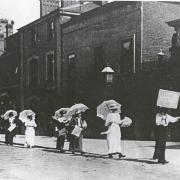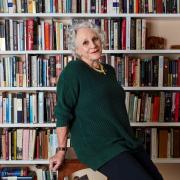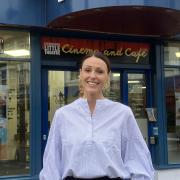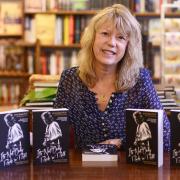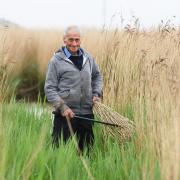Famously, we rebelled against Rome, led by brave Boudicca. But her death in battle left Norfolk ripe for invasion and we live surrounded by reminders of that Roman conquest

- Roman rebellions
Norfolk's tradition of doing different dates back 2,000 years. The Romans arrived in Britain in 43AD, but the lands of the Iceni tribe, including Norfolk, remained fiercely independent for another 18 years. When her husband died, Boudicca refused to give up her family's share of his kingdom to the Romans whose soldiers had seized the land and raped her daughters. Instead she led a revolt which destroyed Roman strongholds in present-day Colchester, St Alban's and London and very nearly defeated the invaders.
- Roman forts
If you had visited Brancaster, Caister on Sea or Burgh Castle almost 2,000 years ago, you would have run into Roman soldiers manning forts at the edge of their vast empire. A chain of coastal forts was built to protect against raids from the sea. Two, at Caister-on-Sea and Burgh Castle, guarded the entrance to the estuary where Yarmouth now stands, with smaller forts and camps at Swanton Morley, Saham Toney, and Horstead.
- Roman roads
One of the main Roman routes into Norfolk from the south was along the Peddars Way, which was already ancient 2,000 years ago. Archaeologists believe there was a ferry in Roman times, from Holme, near Hunstanton, across the Wash to Lincolnshire. If you drive into Norfolk along the A140 today, for long stretches you are following in the tracks of Roman armies and administrators, moving between Colchester and Caistor St Edmund. From the west, the Romans would have marched across the Fen Causeway to Denver. There are more traces of Roman roads across the county, not only in the straight lines seen on a map but in the legacy of their names, such as the lane called Roman Road, which runs north from Toftrees, via Waterden towards Holkham.

- Roman towns
Caistor St Edmund is one of just three regional Roman centres in Britain which have not been built over. Called Venta Icenorum by the Romans it had a forum, temples, baths, an amphitheatre, running water and defensive walls and ramparts. Suburbs, including a big temple complex, grew up outside the enclosed town. Venta Icenorum is still giving up its secrets to archaeologists and free guided tours run on Sundays until September 29 from 2.30pm.
- Roman villages and villas
A line of grand Roman houses stretches along Peddars Way. The remains of a villa, complete with a bathhouse and under-floor heating, lie beneath farmland in Feltwell. Others have been found at nearby Weeting and Methwold, and northwards to Gayton Thorpe, Grimston and Snettisham. Each would have had bath houses, mosaics and wall paintings.
At Hilgay and Hockwold-cum-Wilton, in the south east of the county, there are banks and ditches built by Roman era residents. Tivetshall St Mary, near Diss, also has a Roman villa, which would have stood on the main Roman route from Caistor St Edmund to Colchester.
Every summer a community archaeological dig reveals more Roman remains beneath the fertile soil of Woodgate Nursery, Aylsham. It has unearthed evidence of a villa and pottery kilns and hundreds of finds including tiles, with paw prints created by wild boar, wild cats and pine marten as they wandered over drying clay almost 2,000 years ago.

- Roman industry
Tiny Brampton, between Aylsham and Buxton, was once a major manufacturing centre producing pottery and leather. It was probably Norfolk's second biggest Roman settlement after Caistor St Edmund. Outside its earth walls were its potteries, with at least 132 kilns producing plates, bowls, jugs and jars. More pottery kilns have been found along the Nar Valley at Pentney, Shouldham and Middleton.
- Roman treasure
In the 3rd and 4th centuries the wealthy citizens of Roman Norfolk began burying their coins, jewellery and precious household items, revealing the growing instability of the vast empire. A hoard of silver plates, bowls and coins found at Hockwold is on show at the British Museum, alongside gold rings, necklaces, bracelets and a buckle, plus silver spoons and strainers and an emerald, hidden at Gallows Hill, Thetford. Roman and Iceni coins were buried at Scole, near Diss.
Bronze cups found at Crownthorpe, near Wymondham, were hidden much earlier, in the mid 1st century, probably during Boudicca's rebellion. They include two exquisite cups with handles made from decorative ducks, uniquely fusing Roman and Celtic traditions.
More than 300 Iceni coins were buried in a Roman pot at Honingham at around the same time and at Sedgeford, near Heacham, 20 gold coins, also dating from the first century, were ingeniously hidden in a hollowed-out cow bone. All featured a stylised horse.
Last year metal detectorists found gold, copper and brass Roman coins on a farm near Norwich - which could lead to the discovery of a previously unknown Roman home or shrine.
- Roman temples
The Iceni people would already have had their own gods and it is believed that they continued to be honoured, alongside the new gods introduced from southern Europe. Temples once stood where sheep now graze at Caistor St Edmund. More Roman temples have been found in Hockwold-cum-Wilton, Snettisham, and Thetford.
At Great Walsingham, close to the great Christian centre of pilgrimage which sprang up in Little Walsingham 1,000 years later, images of Minerva, Cupid, Mercury and satyrs were found in 1950, revealing the site of a Roman temple. Inscribed rings suggested it was dedicated to Mercury, the Roman god of travellers, traders, shopkeepers, money, trickery and thieves.
In Wicklewood a temple was discovered 60 years ago, when aerial photography revealed the outline of a rectangular building with a square inner chamber, in crop marks just south east of St James Church. Almost 2,000 years after the temple was built, the crops growing in the fields were still affected by its foundations. A pestle, to grind cosmetics, with a handle in the shape of a duck, was found here, along with so many tiny tiles that archaeologists believe the floors must have been covered in mosaics. The plaster walls would have been painted in red, yellow and black. More than 1,000 Roman coins and other pieces of metal were unearthed, plus a huge flint foundation which might have been the base of an altar or statue.
- Roman recycling
Roman bricks in the walls of several of our medieval churches reveal there were once Roman buildings near churches including Brampton, Burgh Castle, Houghton-on-the-Hill, and Reedham. Reedham is particularly fascinating because not only does the church have the tell-tale tile-like red Roman bricks, but beneath the churchyard are the foundations of a substantial Roman building. This was a Roman fort, port, and possibly a lighthouse as the open sea washed inland to Reedham, along today's Yare valley.
- Roman statues
Not all our Roman remains arrived in Norfolk with the Romans. It was only 300 years ago that Thomas Coke, the first Earl of Leicester, toured Italy, and arrived home to Holkham with souvenirs including ancient statues created between the first and third centuries AD - exactly when the Romans were over here. He built Holkham partly to house this collection and the Statue Gallery is described as the most complete collection of classical statuary in a private house in Britain. Tourists have been impressed by the statues since the 18th century - although the Victorians draped them in cloth to spare visitors' blushes.












